Search: Support The Tackler In Large Grid
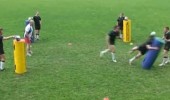 0:35
0:35
Tackle bag grid chase the tackler 2
a high intensity support and conditioning drill in a small space, that you can manage
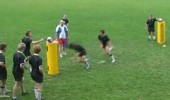 0:04
0:04
Tackle bag grid chase the tackler
A very effective support and conditioning exercise, you can change the space and pace and duration of the work effort
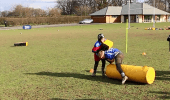 7:32
7:32
The Tackler's Responsibilities
This clip shows a whole session including progressions on the actions of the tackler during the tackle and after the tackle. An excellent contact session delivered by the Sale Sharks Community coaches.
To watch over 2500+ videos join now for free!
JOIN NOW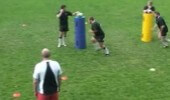
Tackle bag chase the tackler
This will act as a conditioning and as a support drill, working both players hard
L2 - Support Line Breaks
Skill Practice Description • The objective is to increase the commitment to supporting a line break. • The teams play continuous touch, grip or tackle. • Stage 1: when a score is made all attacking players must touch the try line within 3 seconds or the try is disallowed and a turn over is awarded. • Stage 2: when a try is scored all attacking players must touch the ball on the ground within 5 seconds or the try is disallowed and a turnover is awarded. • Play starts again direct from the try line. • The coach may split the defence so cover defenders can challenge the effect of support play once the first line has been breached. Key Coaching Points • Encourage supporting players to angle toward the line break and not stay wide and lateral. • Encourage all attacking players to react and support a line break. • Speed of reaction. • Communication and team work
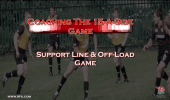 2:46
2:46
L2 - Support Line Breaks & Offloads
Skill Practice Description • The game begins with touch tackles. • Once tackled the ball carrier is allowed to step beyond the tackle line and the support from either side run toward (or attack) the ball. • The pass must be delivered behind the tackle line and not put back in front of the defence, so speed and decision making is vitally important. • Develop the game to grip tackles below the rib cage so the ball can be off loaded. • Progress to full tackles and the ball carrier must fight to keep the ball available. • The support must be aggressive in attacking the ball and getting between and beyond defenders. • When in full contact and the ball carrier cannot off load immediately, rucks and mauls may be played. Key Coaching Points • The game relies on good support play in all areas. This game illustrates the need for consistent and aggressive support. • The supporting players need to work for the ball carrier and attack the ball, getting in behind the defence for an off load. • Once the tackle line has been breached the attack must not allow the defence time to reorganise. • When progressed to full contact, the demand on decision making increases
 2:40
2:40
Falcon's Grid exercise for running lines
Running straight and changing your running line will make players better attackers and underpins an effective 2 v 1. Dave Walder from Newcastle Falcon's run's through a new style exercise that all coaches can use.
L2 - Diamond Support Development
Skill Practice Description • Play a game of touch or grip tackle. • At the coach’s discretion, call “slow ball!” or “freeze” and allow the attack to form a diamond behind the 1st or 2nd receiver. Then call “Play!” • The defence will also be organised but this will be the case in a full game. • Allow the game to progress and shorten the time they have at the slow ball scenarios. • Don’t be concerned if there are not four players in the formation as long as there is at least a second tier of support. • As players become competent at forming the shape in front of the tackle line, the coach may develop the ability to form again, having made a line break. • Develop the game into full contact. Key Coaching Points • Holding spaces open. • Ball carrier to watch the defensive shape and not look round for the support. • Listening and cooperation. Play with the eyes in front and the ears behind. • Intuitive decision making. • Support to hold depth and not arrive at the tackle line flat.
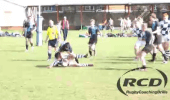 1:00
1:00
Support - Turnover and Counter-Attack
Support play is essential to rugby, particularly in sevens where there is more space. This clip sums up the importance of support. The Eastbourne College scrum-half is isolated and turned-over. Eton then counter-attack and, despite the best efforts of a single Eastbourne defender, they are able to secure the try thanks to an offload to a support runner.
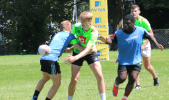 3:10
3:10
QBE - Support Line Breaks & Offloads
Support Line Breaks & Offloads
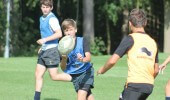 4:08
4:08
Using Games to Improve Support Play
Great tries are often the result of great support play. Coaches are now using more games in their training with set constraints put in to dictate what the coach wants to work on
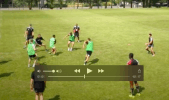 2:06
2:06
Attack Grid For All Ages
Progress your passing practises to make them competitive by adding defenders and ore chaos. This attack grid has lots of flexibility and can be used with players of all ages
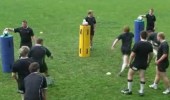 0:25
0:25
Tackle bag drill one hit & support
support has to read whch bag is being tackled and get to be in support by reading the situation
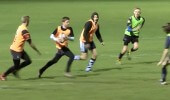 1:10
1:10
Using Games to Develop Passing and Support
Using games to coach is how most Premiership coaches improve skills and especially decision making. In this clip Jon Curry uses some clever rules to encourage supporting lines to help keep the ball alive
 0:44
0:44
Expert - Sir Ian Mcgeechan on Team Support
Learn more about how we support our team mates in pursuit of excellence
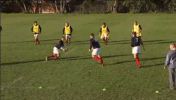 0:39
0:39
Supporting lines - Trail running
A game to challenge how players support with lines of running and communication
Support
QBE - Support Line Breaks
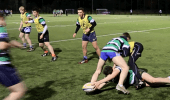 5:13
5:13
Improving support play
Decision making is a tricky skill to coach. Danny Wild the Leeds coach uses conditioned games with breakout technical sessions to improve this process as well as working on some groundwork skills
CCRU - Principles of Play - Support
Support using:
Effective communication
Structure
Anticipation
Back Row Attack Support
Back Row Attack Support
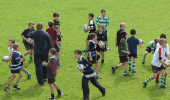 1:24
1:24
Passing in Grid
Players move around in a grid passing to each other. A gentle warm up that is easy to grasp if you have a mixture of talent levels. Involves communication and some handling. Progress to include placing the ball on the ground, then another player picking it up. This is another basic skill that also involves a gentle stretch. You can adapt this with any progression you wish.
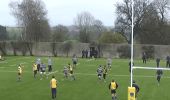 1:00
1:00
Attack Grid - 4 v 2
This continuous exercise puts pressure on your players to think fast and be ruthless in attacking the space. Coaches can change the size of the grid and the number of defenders to make it an easier game
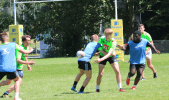 2:13
2:13
Quick Fire Passing Grid
Use as either part of your warm up or as a breakout, this exercise is a high intensity passing challenge. Encourage your players to take ownership of this grid and manage the intensity themselves. Should create lots of fun
9. Principles of play-Support
Principles of play-Support
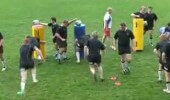 0:25
0:25
Tackle bag drill in 4s with support
A progression for developing support after contact
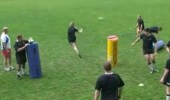 0:26
0:26
Tackle bag drill 3 man support after tackle
This is a very effective drill for developing decision making and awareness in support runners off a tackle situation
 1:07
1:07
Support Runners
Here are some good examples of how effective support runners in attack can be to help you in your coaching process
Touch rugby with an immediate pass to support
A game for developing understanding of space and support.
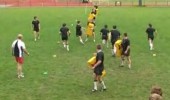 0:12
0:12
Draw the defender and support in channel
The key to creating space is to move a defender away from the space, this drill allows the ball carrier to create the space and the support runner to attack the space
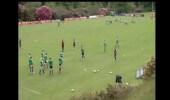 0:33
0:33
Lions 09 Backs support lines 3
Lions 2009 support drills, with a progression
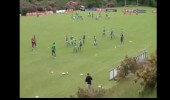 0:33
0:33
Lions 09 backs support lines 2
Lions 2009 support and continuity work
 0:16
0:16
Men's - Support Player Leach
Men's - Support Player Leach
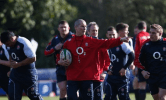 0:33
0:33
Warm Up - Handling Grid
All players running around in a small grid, popping balls to each other. Mix up the types of passes, such as one-handed, high passes low passes etc. Keep them moving before going into more focused stretches.
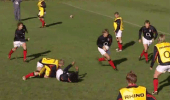 0:22
0:22
Diamond shape support
An exercise for continuity and support.
The coach can set the width of the channel and intensity of the defenders
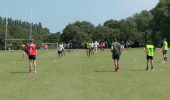 6:00
6:00
Passing and Support Lines
This clip shows the classic passing process but with a significant twist in what players can do post the pass
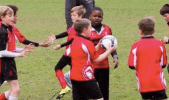 3:27
3:27
Chaos Grid For Multiple Skills
This practise will challenge all players at all levels, originally seen at Bath RFC in 2012 it is been adapted for all players. The coach can change the width and pressure to fit in with the player abilities. The players love this !
 2:11
2:11
Quins - Support Touch Game
The coaches use games to teach techniques and allow players to experiment in game situations. The coach can set the parameters for the game dependent on the skill sets of the players
QBE - Diamond Support Development
 0:44
0:44
Interview - Sir Ian McGeechan - Team Support
Sir Ian McGeechan discusses why teamwork is crucial to success
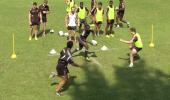 6:17
6:17
Quins - Attacking lines of support
Harlequins academy players are coached to be accurate in their passing and use lines of running and footwork to create space for other players
 7:19
7:19
Sevens - Uncovered - The Support Staff
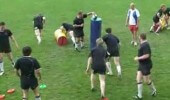 0:14
0:14
Tackle bag & support hi intensity drill
Sometimes a high intensity, high repitition drill is very effective at getting the point home
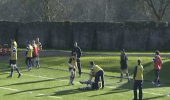 0:51
0:51
Support play in 3s, Offload and ruck
Practice the different options in recycling the ball. A lot of the time, the ball will be tied up and an offload won't be on. Develop this drill by allowing the players to call how the ball should be played, and for their teammates to react.
3. Support - Colour Reaction Drill
Isolated technical practice
Courtesy of the SRU
11. Support - Ugly Ball
Isolated technical practice
Courtesy of the SRU
10. Support - Resisted follow through
Isolated technical practice
Courtesy of the SRU
9. Support - One Handed power pass
Isolated technical practice
Courtesy of the SRU
8. Support - Off the Ground reaction pass
Isolated technical practice
Courtesy of the SRU
7. Support - No Back Lift bench passes
Isolated technical practice
Courtesy of the SRU
6. Support - Lineout Ball
Isolated technical practice
Courtesy of the SRU
5. Support - Kneeling one handed power pass
Isolated technical practice
Courtesy of the SRU
4. Support - Follow through star
Isolated technical practice
Courtesy of the SRU
2. Support - Chase the pass
Isolated technical practice
Courtesy of the SRU
1. Support - 1,2,3 Follow Through
Isolated technical practice
Courtesy of the SRU

Women's - Support player/Leach
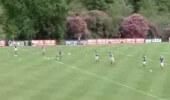 0:23
0:23
British lions - support & attack drill 1
This drill illustrates how attack can go from narrow channels to wide play very quickly, and players should practice this continually
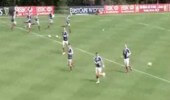 0:23
0:23
Lions 09 - Support & Attack
The ability to create attacking situations quickly is fundamental to creating pressure

Junior - Support player / Leach 1
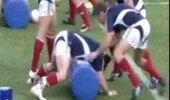 0:47
0:47
Lions 09 - Clearing the tackler away
With the new adjustments around the tackle zone, what variation would you adopt now so that this drill is now legal?

Junior - Support player / Leach 2
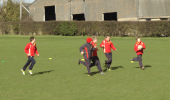 1:15
1:15
Conditioned Touch - Tackler drops to Knee
The condition in this game is for those making the 'tackle' (or touch) to drop to their knee for four seconds before re-joining the game. This should give more space for the attackers to exploit. A good game if you have been working on 2v1 or 3v2 handling exercises.
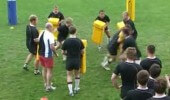
Stay on your feet and support gauntlet
Managing contact and collisions are key to continuity
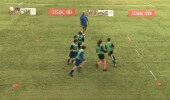
Snake Run and Pass
Players must closely follow the player in front, changing direction with them in a small grid. The front player pop passes to their closest supporter then rejoins the back of the snake.
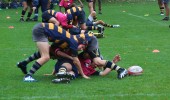 9:20
9:20
Managing the Contact Area
Concentrating on the actions of the tackler and the support player in the moments after a tackle. It's important to practice the correct body position and technique so that the right decision can be made on the pitch.
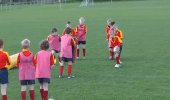 1:49
1:49
2 v 1 Passing
Adding a live defender helps to encourage players to hold their depth in support, so a good pass can be completed.
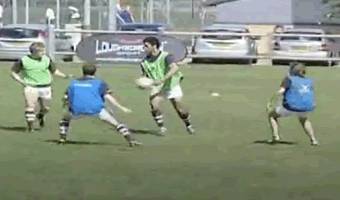 4:30
4:30
Small-side game - Ruck Touch
There are many versions of ruck touch with the support players needing to recognise the needs of the tackled player.
The defence should be conditioned to provide increasing pressure to the tackle area. This will develop the situation recognision of the attacking players who must play accordingly. Robotics in rucking regardles of the situation should be discouraged and the option of picking upthe ball and going forward should be an option
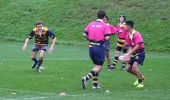 4:18
4:18
Attacking Lines: Unders and Overs
Using different angles of running confuses tacklers and pulls a defensive unit out of line. Learning the skills to both run these lines and pass the ball accurately is key to any ambitious team looking to attack and offload
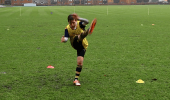 2:04
2:04
Improve Skills at Home
It's a great idea for players of all ages and abilities to practice their skills at home. Putting in the extra hours outside of training makes a huge difference back on the pitch. There are a large number of ideas for training at home, including position-specific skills, on PremiershipRugbyCoaching.com Join now to see them all.
 5:07
5:07
Tackle Technique - Full Session
[WITH DRILL VIDEOS] This session from Joe Goodman (Bristol University Rugby) has been designed to prepare players for a return to full contact competition, re-establishing correct technique to ensure safe, efficient tackling through progressively increasing the level of contact and complexity of skill execution.
 2:16
2:16
Worcester - Decision Making
The coach uses a tackle sausage and ball to replicate an attacking player. If the player falls back towards the defender he secures the ball, if the attacker falls further away the defender clears aggressively. This exercise could be worked as a support player for one of your own attackers
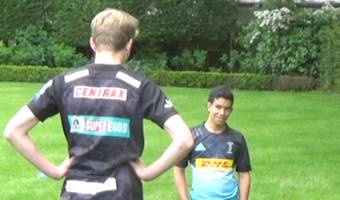 1:52
1:52
Explode Up Tackling
Tackler starts on their knees. As the ball carrier gets closer the tackler steps up to give them more power and punches through to give them more power. The tackler drives through and finishes on top.
L2 - Penetrating Defence Game
Skill Practice Description • The playing area is marked out in 5m channels. • When defending, players must stay within their channel throughout the game. • The attack must look to penetrate the defence by creating and preserving space. • The defence must use a two handed touch. • There is a 5 tackle turnover rule and once possession is turned over, the defence must get into a channel as the opposition can attack immediately. Key Coaching Points • Support players to hold their opposite number as long as possible before cutting a line to take the pass. • The defender can close the space as far as the edge of their own channel. • If the support player cuts too early or the ball carrier does not move their defender enough, the support player will be touched/tackled. Relevance to the Game • This game will help develop the footwork and running lines to effectively move defenders in order to penetrate the tackle line.
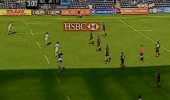 0:24
0:24
Sevens - Offloads 2
To execute an offload you need to have support players in the right area, here the ball carrier knows he has support and is able to take a risk and offload out of the back of the tackle. Prior to the offload the ball carrier works hard to stay on his feet. Key factor : Leg drive - Twist and work the body in contact - Control ball one handed - Communication from support players
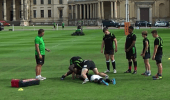 5:51
5:51
Turning defence into attack
The Northampton saints approach to defence is to "Turn over ball" and to this end the tackle is only the start of the process and the coach outlines this approach and provides some examples
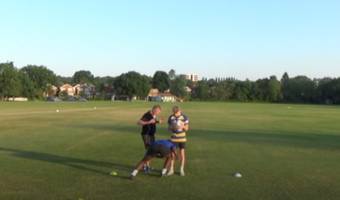 1:45
1:45
Around The Clock Tackling
Set up 5 cones around in a circle. The tackler works out from the first cone to make the tackle. The tackler then backtracks around the next and then comes forward to make the tackle again. Two tackles off the right shoulder, one front on and two off the left shoulder.
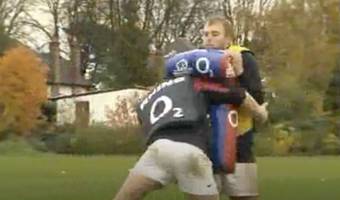 4:23
4:23
Impact Wrap Tackle
Impact Wrap Tackle
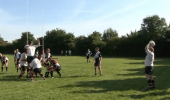 1:30
1:30
The Lineout Game - Lifting techniques
The Lineout Game - Lifting techniques
L2 - Identifying Space to Attack
Skill Practice Description • Attacking team face away from defenders before play commences. • Attackers spread or grouped in any formation. • Defenders split (unseen by attack) between pitch A & B. • Coach calls “turn” and introduces the ball to the attack who turn to scan the distribution of the defence and attack whichever pitch they choose. • Defenders on the pitch not being attacked cannot cross over to help defend. • If the attack breaks down, the defence gain bonus point. • If attackers choose to attack the area with the most defenders and still score - gain a bonus point. • Progression: • Allow the defenders in the area not being attacked to move across to support the other defence. Perhaps make the secondary defence go deeper around a cone. • Vary the space before game starts between attack and defence - more or less time for the attackers. • Allow defence to recover the ball to counter attack. Key Coaching Points • Reward close and immediate support of the ball carrier in and around contact area. • Defenders deny space and time to the numerically superior attack
 3:21
3:21
Three Channel Passing Challenge
Adding pressure to key skills is crucial to improve your players and to practise like you play. This exercise covers a variety of skills but essentially is about accurate passing and fixing defenders
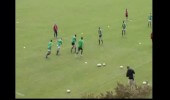 0:48
0:48
Lions - Attacking channells
From the Lions 2009 tour, a support drill in a channel to encourage the ball carrier to move the defender and make space for the support player
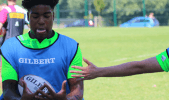 3:24
3:24
Continuity - Keeping The Ball alive
Support is one of the "Principles of play" and finding the right depth can be tricky. Harlequins Academy Manager Howard Graham delivers an excellent exercise to practise improving support play
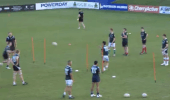 0:44
0:44
Learning to pass deep
Players must pass through gate before passing to supporting player before they reach the gate. This helps to ensure supporting players hold their depth and maintain a straight running line.
 2:27
2:27
England Creating Quick Ball
Eddie Jones manages a game at training focusing on creating quick ball, is this the basis of his attacking game & will it work?
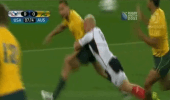 0:15
0:15
Men's - Offloads 2
A counter attack invlving moving the ball wide quickly, then attack defenders with support runners and finally a 2 v 1 to score in the corner. Key factors : Strong communication - Wide spin passes - Attacking the space around defenders - Support the ball carrier from behind - Offload with two hands - straight running - Flat pass
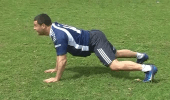 1:51
1:51
Breakdown Fundamentals - Bridge Endurance (Frogs)
Body position and supporting your own body weight is a contentious issue at the breakdown. In this drill a combat coach explains how to become better at supporting your own body weight. This is a series of body movements to strengthen the core and improve flexibility
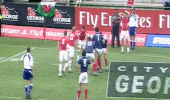 0:38
0:38
Sevens - Full Lineout 3
Accurate skills are the key to lineouts in seven's, a combination of movement, lifting and throw combine to make an effective restart for the attacking team. The shape of the attacking side is pre planned to create a mis - match with a faster player v a slower one. key factors : Pre call the move - Fast feet - Strong core for jumper - Support from both players to lift the jumper - Jumper to jump - Accurate throw - Support he jumper to the ground - Offload pass to scrum half
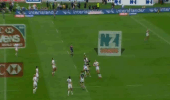 0:28
0:28
Sevens - Standard restart with attack winning ball 3
A well organised re start with one main attacker challenging for the ball with support both in front and behind him, if the ball is knocked either side of the main catcher the ball will be gathered by his teammates. Great leg drive to continue the attack and a very long pass to complete the scoring. Key factors : Accurate kick - Focus on the ball - Sideways jump - Catch ball above head - Structured support
Impact Guard Tackle
This tackle is used when close to either try line and intended to stop the ball carrier from moving forward
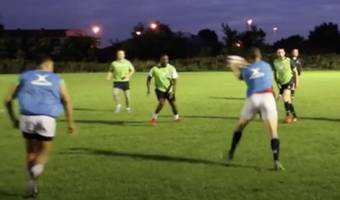 3:39
3:39
Two Touch With Tackle Practice
This game has multiple conditions for both attackers and defenders. Dropping defenders to practise their tackling while working on support lines and groundwork for the attackers. Great for the first half an hour of your session
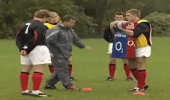 12:52
12:52
Tackle Technique - Progressions for Juniors
This clip illustrates tackle technique using progressions suitable to all players and possibly requiring regular revisit to embed safe and effective tackling
Back Play from Set Piece - Attack from Scrum
It’s not a matter of going through the strike move repertoire. It is about selecting appropriately from the repertoire according to the opposition and game situation.
Attacking the space between the two teams is paramount and attacking the ball when running support lines will assist the offload and turn defenders.
Back Play from Set Piece - Attack from Line Out
To take advantage of the forwards being grouped and to utilize the space this provides, the appropriate strike call needs to be made and space attached.
Attacking the space between the two teams is paramount and attacking the ball when running support lines will assist the offload and turn defenders.
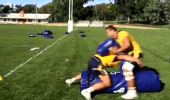 8:10
8:10
Ruck Clearing and Decision Making
Advanced clearing exercises for senior players. The support player makes a decision on how to clear out the ruck based on the position of the opposition.
 4:48
4:48
Breakdown - Competing For The Ball
A great drill with explanations and supporting theory to help coaches improve their players accuracy and legality at the breakdown
Back Play - Attack From Scrum - Younger Youth
To take advantage of the forwards being grouped and to utilize the space this provides, young players should be encouraged to develop their decision making from a non-prescriptive environment.
It’s not a matter of going through a strike move repertoire. Its a matter of attacking the space between the two teams and running support lines that will assist the ball carrier
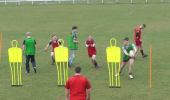 6:32
6:32
Fixing Defenders
Starting with a simple 3 man passing drill the coach adds pressure adding fixed defenders and then live defenders, the progressions are intended to be game related. Ask questions to confirm technical points
 7:27
7:27
Defence - Defensive Systems
This clip shows past footage, but from this bird’s eye view, it clearly illustrates the organisation required to be a sound defensive team
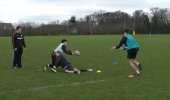 1:04
1:04
Offloading technique
Here's an example of a simple but effective 2v1 drill to practice the offload. Players concentrate on staying strong and getting their shoulders through contact, with the ball remaining in two hands. Support players communicate their position and time their run.
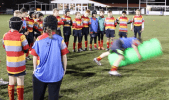 5:51
5:51
Tackling - When is the tackle completed?
It is very much an individual choice as to when a tackle is completed to when the defender can compete for the ball. What is generally accepted is that good tackle technique will enable the defender to "Be ready" for his next task. This clip explores why a strong grip or "Ring of steel" will enable the tackler to be dominant

